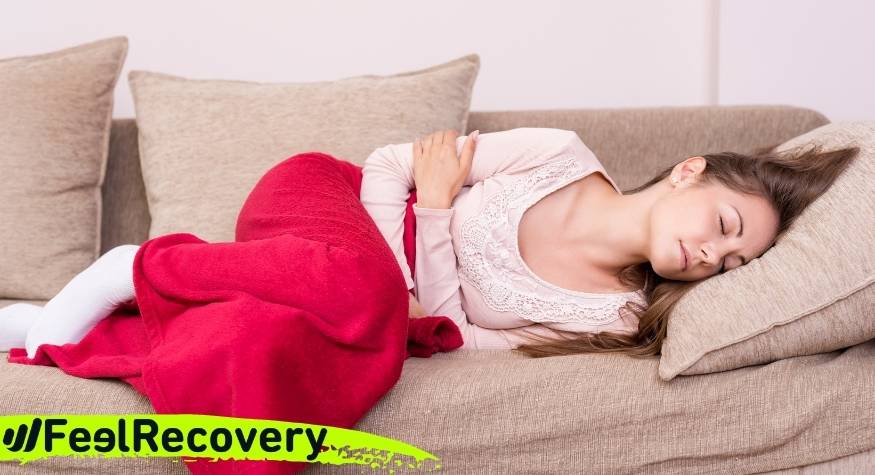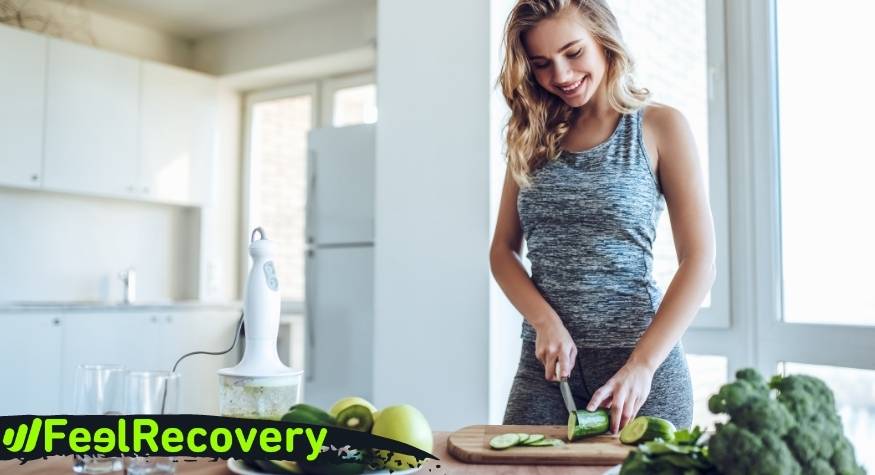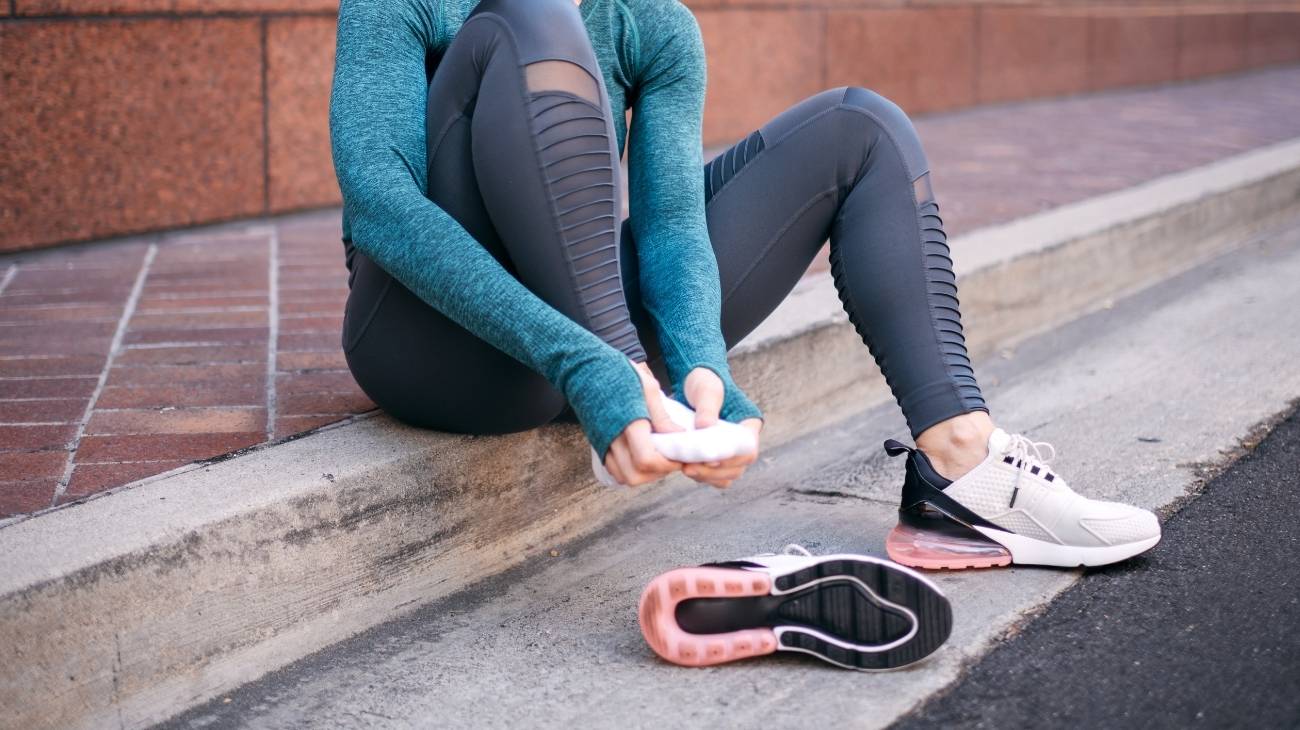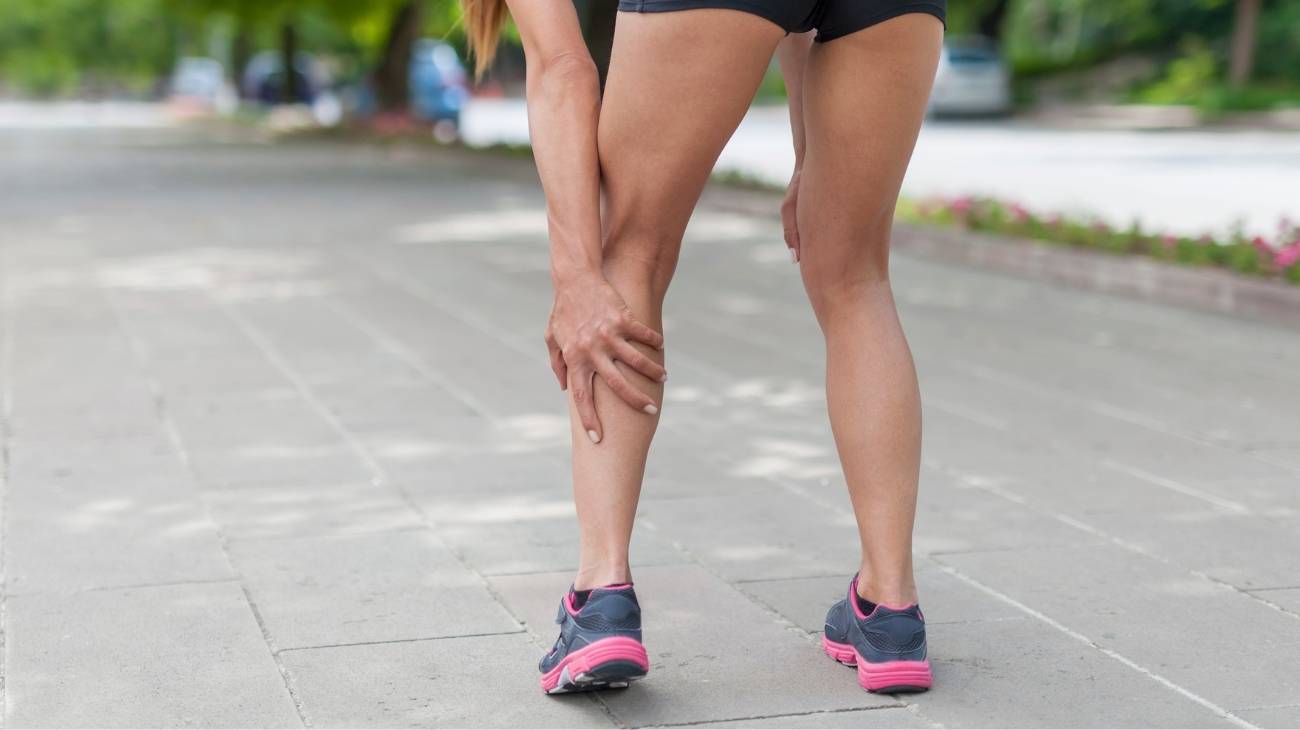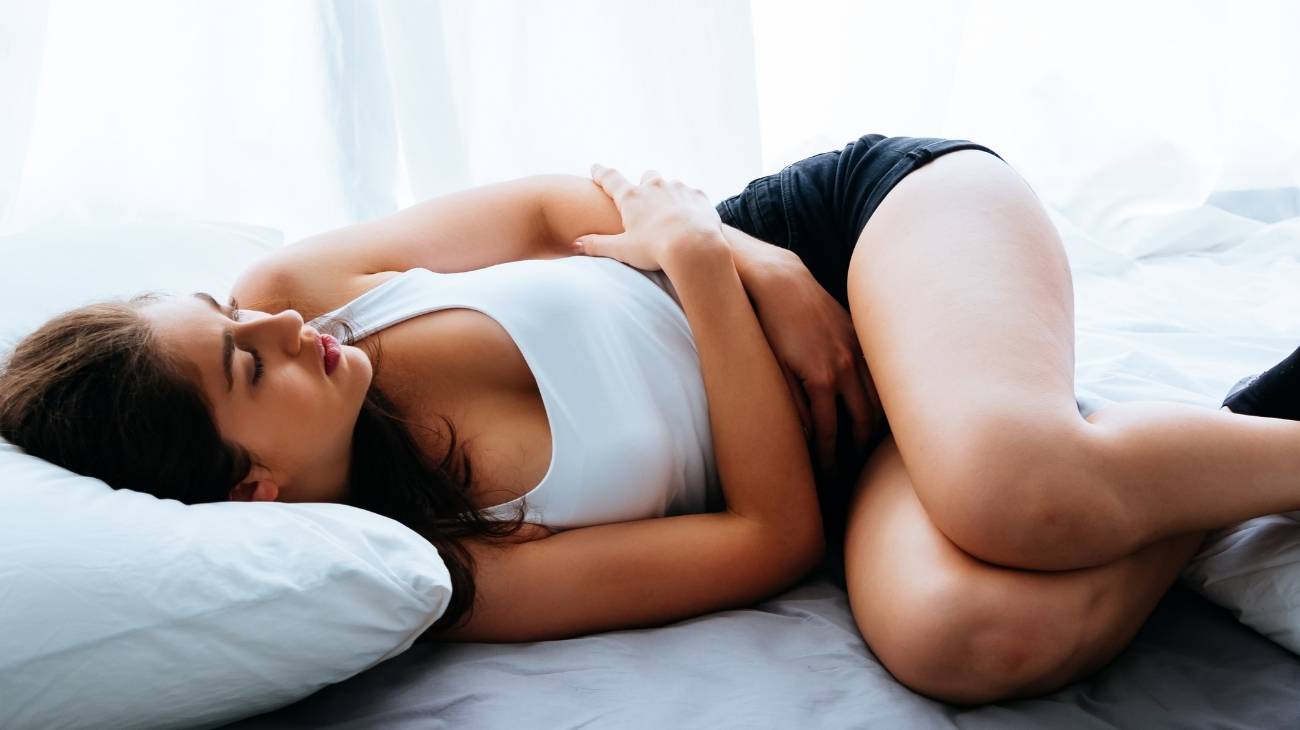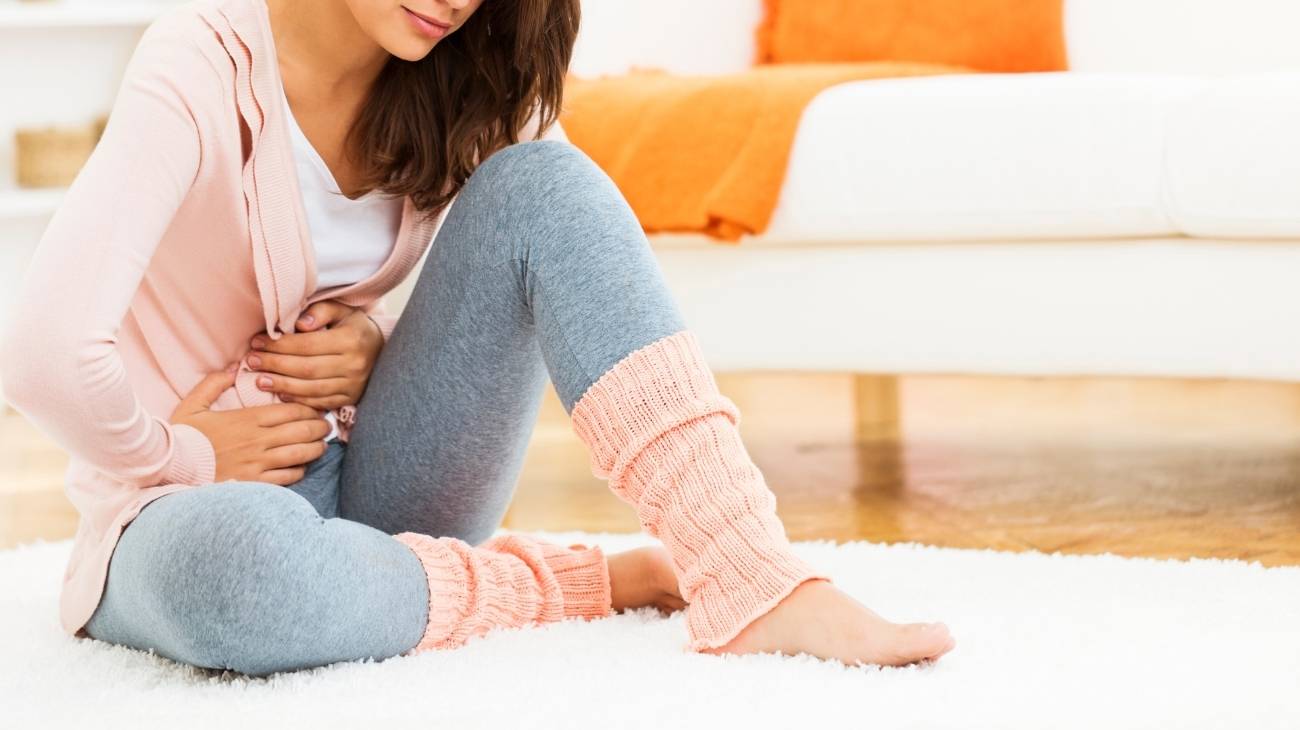- What are menstrual cramps or dysmenorrhoea?
- What are the causes of menstrual cramps in the womb?
- Best products for period cramps
- Main symptoms associated with menstrual cramps
- How to relieve the pain and improve the symptoms of menstrual cramps?
- What are the most effective prevention methods for menstrual cramps?
Dysmenorrhoea, also known as menstrual cramp, is considered one of the most annoying conditions a woman can suffer from. While for some women it is hardly painful, for others it can be severe enough to disrupt daily activities for a few days each month.
As a result, it is important that, in addition to knowing what menstrual cramps are, people are also aware of what causes menstrual cramps, the associated symptoms, how they can be alleviated and what methods are effective in preventing period cramps.
What are menstrual cramps or dysmenorrhoea?
Menstruation is defined as vaginal bleeding that occurs as part of a woman's monthly cycle. For some people, it is often accompanied by cramps or contractions that, in short, are known as "dysmenorrhoea". Dysmenorrhoea is a syndrome that causes severe pelvic and abdominal pain, both before and during the period.
It is a condition that occurs in the lower abdomen in a throbbing manner, causing cramp-like pain that may even be accompanied by dizziness, nausea and vomiting. According to some studies, dysmenorrhoea is caused by an excess production of those hormones that tend to accentuate the contractions of the uterine musculature and are called "prostaglandins". As a result, about one third of the world's women suffer from menstrual cramps.
What are the causes of menstrual cramps in the womb?
Primarily, period cramps are caused by the uterus contracting naturally to help expel its lining. But beyond this, prostaglandin hormones are thought to be involved in the pain and inflammation of the belly, especially when women have the highest levels of these substances and consequently suffer much more intense contractions.
However, apart from these initial causes, there are also other reasons or origins for the occurrence of uncomfortable belly spasms during the menstrual period. Therefore, it is worthwhile to point out which are the most relevant factors that cause painful cramps during menstruation:
- Uterine fibroids, or non-cancerous growths in the wall of the uterus, cause severe pain during menstruation in the form of cramps.
- Adenomyosis, which is a condition distinguished by the appearance and growth of endometrial tissue in the wall of the uterus during the last years of fertility, also causes dysmenorrhoea in women.
- Another factor that causes menstrual cramps is a condition called "endometriosis". This causes the tissue that lines the uterus to implant and grow outside the uterus.
- If a woman has a smaller than normal opening of the cervix, this will obstruct menstrual flow and thus cause a painful increase in pressure inside the uterus, leading to dysmenorrhoea.
- Obesity or being overweight is also a major reason why some women suffer from painful menstrual spasms.
- Certain habits, such as drinking alcohol and smoking, cause intense cramps in the belly during the period.
- Women who had their first menstrual period before the age of 11 are also at risk.
Best products for period cramps
Bestseller
-
Microwave Wheat Bag for Back Pain Relief (Extra Large) (Hearts)
£24,95 -
Microwaveable Wheat Bag for Pain Relief (Hearts)
£20,95 -
Microwaveable Wheat Bag for Pain Relief (Oxford)
£20,95 -
Microwaveable Wheat Bag for Pain Relief (Sport)
£20,95 -
Wheat Bag for Microwave Classic Bottle Shaped (Hearts)
£20,95 -
Wheat Bag for Microwave Classic Bottle Shaped (Oxford)
£20,95 -
Wheat Bag for Microwave Classic Bottle Shaped (Sport)
£20,95
Main symptoms associated with menstrual cramps
On a medical level, abdominal and/or pelvic pain in women can be associated with many other conditions. Therefore, in order to determine whether it is menstrual cramps or dysmenorrhoea, it is essential to take into account the main symptoms, indications or signs of this type of cramps.
These are listed below:
- Nausea, dizziness and vomiting.
- Diarrhoea or loose stools.
- Fatigue, irritability and weakness.
- Headaches
- Severe contractions in the lower abdomen
- Pain radiating down the legs
- Lower back pain
- Swelling or inflammation in the belly.
- Fainting, sometimes
- If the condition is very severe, syncope appears, which is an abrupt and temporary loss of consciousness and postural tone.
How to relieve the pain and improve the symptoms of menstrual cramps?
Fortunately, women who suffer from these strong cramps during their menstrual cycle can implement different solutions to soothe the pain and eliminate the symptoms that often generate such spasms for several days.
Therefore, in order to get relief, we recommend the following:
Alternative and complementary therapies
There are numerous treatments or therapies that lead to healing and improvement of the symptoms that appear with dysmenorrhoea. Here, we tell you what they are and how they should be carried out once the strong contractions are generated in the abdominal or pelvic area:
- Massage therapy: To soothe the pain generated by spasms during menstruation, it is also pertinent to rub and rub the belly area to relax it, with the help of therapeutic massages that have the capacity to make the tissues more flexible and improve blood circulation. As a result, it eliminates the stiffness caused by the contraction of the uterus.
- Thermotherapy: According to experts, heat is one of the best allies to soothe the pain caused by dysmenorrhoea. As a result, thermotherapy is recommended for women with dysmenorrhoea, as the application of heat for therapeutic purposes guarantees a sedative and relaxing effect, as well as analgesic and anti-inflammatory. Thus, by placing heat on the belly area, it is possible to reduce pain and swelling.
- Natural remedies using plants: Another effective way of substituting drugs using complementary therapies to eliminate the discomfort caused by menstrual cramps is based on taking certain natural remedies. In this case, the most recommended are: Making infusions of cinnamon, camomile or basil, drinking ginger tea, laurel, peppermint and thyme.
- Meditation and relaxation: Practising relaxation techniques (including yoga and meditation) is effective in relieving pain during the menstrual period. Meditation improves the physical and emotional symptoms of premenstrual syndrome. In addition, it clears the subconscious of patients of any tension and relieves anxiety, so that they achieve a state of overall peace.
- Aromatherapy: Aromatherapy is a natural means that emerges as an alternative medicine to provide the improvement of the physical and psychological well-being of individuals. Consequently, you can resort to the use of odoriferous materials and essential oils to counteract pain in the abdominal and pelvic area during menstruation. The most recommended scents to soothe the symptoms of primary dysmenorrhoea are: Lavender, chamomile, geranium, sage, rose and exotic basil.
- Healthy lifestyle habits: Another complementary treatment to eliminate or attenuate menstrual spasms consists of acquiring healthy lifestyle habits in your daily life. For example: Regular physical activity (without overdoing it) to release endorphins and prevent pain, constant hydration to reduce inflammation in the abdomen, sex to relax the uterus, eating foods rich in vitamins and minerals (broccoli, chia, spinach, pomegranate, banana, fish, nuts, etc.).
Dietary supplements
Also known as "dietary supplements", food supplements refer to all those products that have been elaborated with the purpose of complementing a healthy diet, thanks to the fact that they contain vitamins, minerals, fatty acids, amino acids and enzymes among their ingredients. As such, they aim to provide micronutrients to ensure a general sense of well-being and improve nutrition to follow a given treatment.
In that sense, although they cannot be used as substitutes for conventional foods, they are certainly essential to complement healthy living habits. Fortunately, to soothe the pain caused by dysmenorrhoea and even to prevent this condition in women of any age, there are a wide variety of dietary supplements that are indicated and among them, we find:
- Magnesium: This is a nutrient of great help in relieving menstrual pain and preventing the symptoms caused by dysmenorrhoea. In addition, it is a mineral that tends to reduce anxiety, stress and nervousness, which are factors that worsen the condition to a great extent. Now, to avoid magnesium deficiency in your body, it is recommended to eat foods such as: avocado, spinach, nuts, quinoa, chickpeas, lentils, wholemeal bread, etc.
- Vitamin E: It is defined as an excellent ally to reduce menstrual pain, thanks to its ability to block the increase in prostaglandin levels (the substance that increases the intensity of the contraction of the uterus). Therefore, if you take vitamin E supplements before and/or during your period, you will not have to endure this severe discomfort. Some foods rich in this vitamin are vegetable oils (wheat germ, almond, sunflower, hazelnut and rapeseed), pistachios, peanuts, fish, broccoli and spinach.
- Omega 3: It consists of an essential oil that is characterised by its anti-inflammatory effect and thanks to this, it manages to improve the symptoms linked to a woman's menstrual period. It also provides calories for energy and strengthens the heart, blood vessels, lungs, immune system and endocrine system. The best dietary supplements with omega 3 are the following: fish, olive oil, soya, nuts, oats, milk, yoghurt, eggs, etc.
- Vitamin B6: If patients consume vitamin B6 on a daily basis, they have the possibility to minimise painful menstrual periods, as this supplement increases progesterone levels. Especially when combined with magnesium every day. In addition, it produces haemoglobin, keeps blood glucose in normal ranges, generates antibodies and maintains neurological function. To enrich your body with vitamin B6, you can choose to eat the following: bananas, nuts, tuna, salmon, poultry, beef and pork, fortified cereals, among others.
- Vitamin B1: Thiamine or vitamin B1 is a perfect food supplement to reduce the symptoms produced by dysmenorrhoea, as well as to treat magnesium deficiency in the body, supply energy to the body and optimise brain and nervous system function. Vitamin B1 can be found in food sources such as eggs, pulses, peas, trout, tuna, nuts, seeds, rice, pasta, flour, wheat germ, etc.
Medications
When pelvic and abdominal pain is very intense during a woman's menstruation and prevails for such a long time that it is almost impossible to improve with the help of natural remedies or physiotherapies, the most appropriate thing to do is to visit a specialised doctor who is qualified to prescribe medication. It is essential to take into account a series of particular factors in order to calm this ailment.
In that sense, the medicines you should take when suffering from menstrual cramps will depend on different aspects, such as: history, severity of pain, state of health, age, type of dysmenorrhoea (primary or secondary) and tolerance to medicines. For all these reasons, it is not advisable to self-medicate in any way, as the side effects could be very serious (diarrhoea, nausea, intoxication, drowsiness, gastritis, addiction and even cardiac arrest).
What are the most effective prevention methods for menstrual cramps?
Although dysmenorrhoea can occur for different reasons, depending on the nature of each woman, it is possible to prevent these spasms generated during menstruation.
We recommend a series of effective methods that are ideal for preventing contractions in the womb due to menstruation:
- Be physically active and exercise every day, as this helps to relieve muscle tension in the abdomen and pelvis.
- Drink water constantly in order to keep your body hydrated and prevent fluid retention, which almost always leads to bloating and cramps.
- Don't forget to respect your sleep cycles and get a good night's sleep. This releases melatonin and allows everyone to relax their abdominal muscles.
- It is also important to eat healthily to maintain an overall balance in the body and thus counteract any conditions or ailments. For example, it is recommended to eat herbs and spices.
- You should supplement your healthy diet with vitamins and minerals that prevent dysmenorrhoea, be it magnesium, omega 3, vitamin E, vitamin B6, vitamin B1, calcium, etc.
- Avoid bad habits that are known to cause fluid retention and swelling of the abdominal area. For example: drinking alcohol, smoking, eating fatty and salty foods, eating a lot of chocolate, etc.
- Relax: Although this is difficult when we suffer from pain, one of the most effective remedies is the ability to relax in times of stress, you can start by controlling your breathing and when you have advanced in the practice you can start meditating for deeper effects.
References
- Yang, N. Y., & Kim, S. D. (2016). Effects of a yoga program on menstrual cramps and menstrual distress in undergraduate students with primary dysmenorrhea: a single-blind, randomized controlled trial. The Journal of Alternative and Complementary Medicine, 22(9), 732-738. https://www.liebertpub.com/doi/abs/10.1089/acm.2016.0058
- Eby, G. A. (2007). Zinc treatment prevents dysmenorrhea. Medical Hypotheses, 69(2), 297-301. https://www.sciencedirect.com/science/article/abs/pii/S0306987706009066
- Kim, J. S., Jo, Y. J., & Hwang, S. K. (2005). The effects of abdominal meridian massage on menstrual cramps and dysmenorrhea in full-time employed women. Journal of Korean Academy of Nursing, 35(7), 1325-1332. https://synapse.koreamed.org/articles/1063323
- Lauretti, G. R., Oliveira, R., Parada, F., & Mattos, A. L. (2015). The new portable transcutaneous electrical nerve stimulation device was efficacious in the control of primary dysmenorrhea cramp pain. Neuromodulation: Technology at the Neural Interface, 18(6), 522-527. https://www.sciencedirect.com/science/article/abs/pii/S1094715921017311
- Han, S. H., Ro, Y. J., & Hur, M. H. (2001). Effects of aromatherapy on menstrual cramps and dysmenorrhea in college student woman: A blind randomized clinical trial. Korean Journal of Adult Nursing, 13(3), 420-430. https://koreascience.kr/article/JAKO200125458753961.page
- Deligeoroglou, E. (2000). Dysmenorrhea. Annals of the New York Academy of Sciences, 900(1), 237-244. https://nyaspubs.onlinelibrary.wiley.com/doi/abs/10.1111/j.1749-6632.2000.tb06235.x
- Harel, Z. (2008). Dysmenorrhea in adolescents. Annals of the New York Academy of Sciences, 1135(1), 185-195. https://nyaspubs.onlinelibrary.wiley.com/doi/abs/10.1196/annals.1429.007
- Iacovides, S., Avidon, I., & Baker, F. C. (2015). What we know about primary dysmenorrhea today: a critical review. Human reproduction update, 21(6), 762-778. https://academic.oup.com/humupd/article/21/6/762/628858
- Granot, M., Yarnitsky, D., Itskovitz-Eldor, J., Granovsky, Y., Peer, E., & Zimmer, E. Z. (2001). Pain perception in women with dysmenorrhea. Obstetrics & Gynecology, 98(3), 407-411. https://www.sciencedirect.com/science/article/abs/pii/S002978440101465X
- Grandi, G., Ferrari, S., Xholli, A., Cannoletta, M., Palma, F., Romani, C., ... & Cagnacci, A. (2012). Prevalence of menstrual pain in young women: what is dysmenorrhea?. Journal of pain research, 169-174. https://www.tandfonline.com/doi/full/10.2147/JPR.S30602





























